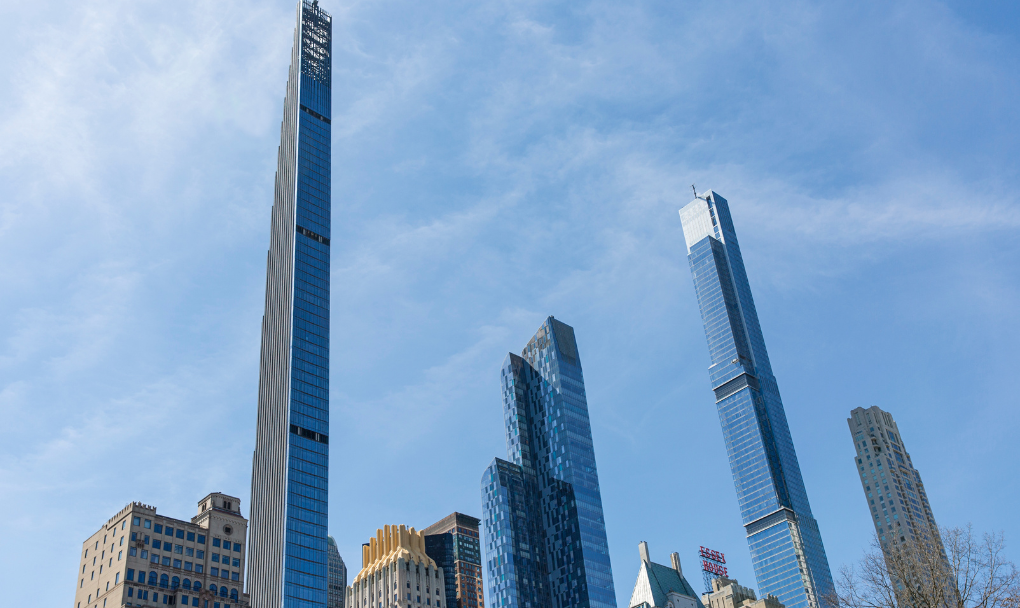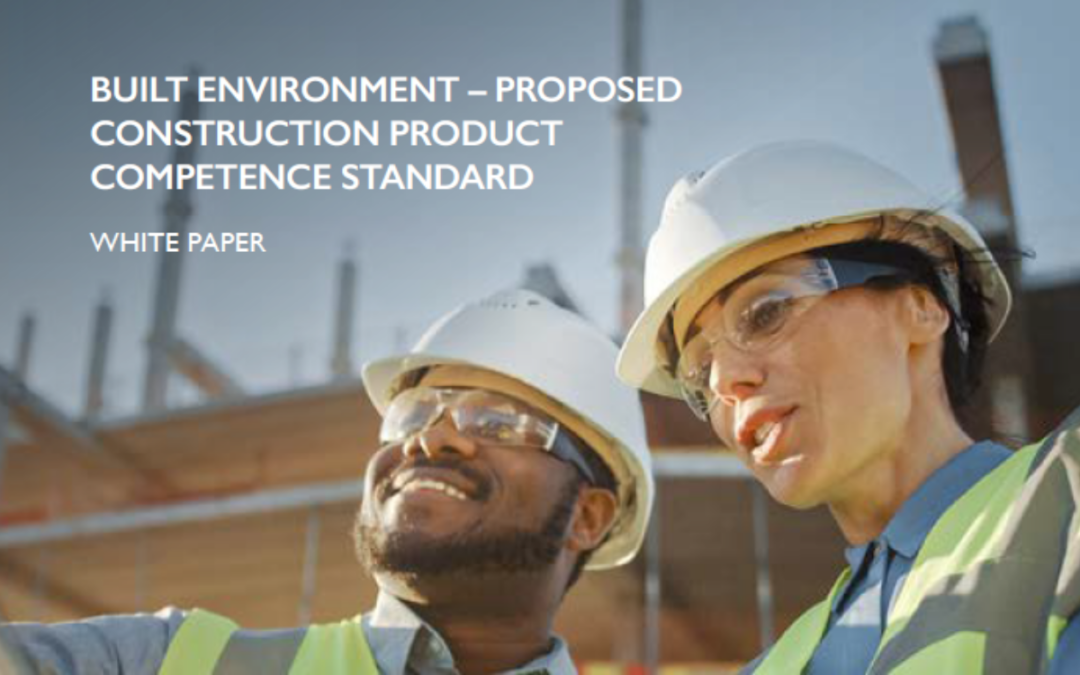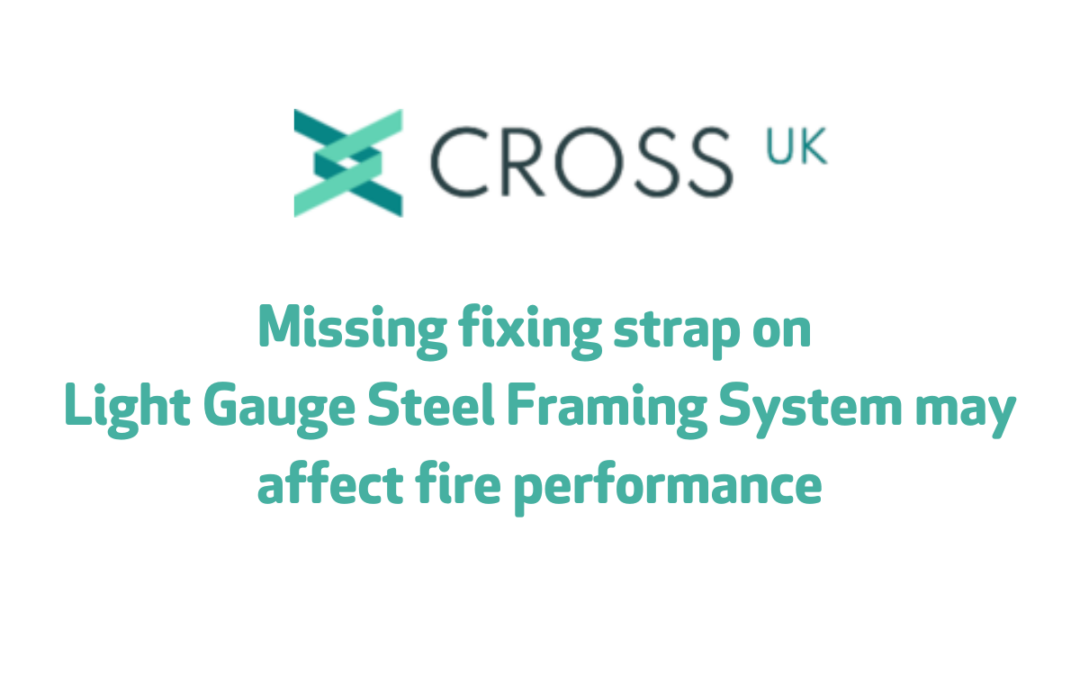
by Clair Mooney | Nov 8, 2022 | Building Safety Act, Drylining, Technical
FIS and the Tall Building Working Group (TBWG) have published a report which investigates the causes of noise emanating through the fabric of some tall buildings, identifies methods of remediation and provides guidance for affected buildings.
The Tall Building Working Group (TBWG) was formed in 2018 to address a global phenomenon where creaking can be heard in tall residential towers in high wind conditions.
The group was established under the umbrella of trade body Finishes and Interiors Sector (FIS) and set about bringing together the entire supply chain, namely developers, tier 1 contractors, manufacturers, architects, specialist drylining contractors and engineers who are involved in the specification and construction of buildings where noise issues have been reported.
The starting point was to investigate the root cause of this phenomenon and then look at how occurrence can be reduced or better managed in new towers by providing better guidance for architects, engineers, designers and developers.
The group engaged with individuals and organisations from across the globe and absorbed the findings of all available secondary research before embarking on a structured research programme of their own, funded by members of the TBWG.
Further research was carried out by structural engineers WSP to present, in a graphical format, the inter-storey differential movement in vertical and horizontal directions affecting partitions and other elements of fit out. This document explains to the project fit out designer how a high-rise tower reacts to external loads.
- External loads make building move: non-structural elements should be installed in such a way to allow for the movements freely.
- Any locked in movement will cause distress in the non-structural elements.
- Any frictional resistance to movements will cause noise.
The key to reducing the phenomenon occurring in future tall towers is sharing the information contained in the structural engineer’s movement and tolerance reports early with the system owners of the drylining, and providing movement joints to allow the elements of the internal fit out to move independently.
Manufacturers have been exploring different solutions and methods of mitigation. At this stage none have been able to completely eliminate the sound.
Commenting on the work, FIS CEO Iain McIlwee said:
“I think this is a first. I cannot think of a single time when the construction supply chain has attacked a problem in this way. Rather than battening down the risk hatches, reaching for the contract and starting the blame game, this was a genuine attempt to work together to understand and collaborate to solve it. This is a body of work all involved can be proud of, not just because it will help unravel some potentially complex issues or maybe help people sleep more soundly, but because it is an example of how we can collaborate and be better as an industry.”
The TBWG is planning to hold another conference to share the report outcomes with the delivery teams, meanwhile a summary report is available here.

by Iain McIlwee | Oct 13, 2022 | Building Safety Act
This week FIS submitted our response to the consultation on implementing the new building control regime for higher-risk buildings and wider changes to the building regulations for all buildings. The consultation was split into 12 consultation sections relate to the proposed changes to Building Regulations under Part Three of the Building Safety Act 2022. It starts to give greater insight into how the Building Safety Regulator intends to manage the Building Control Process for Higher Risk Buildings alongside the wider Building Regulatory Process, where the two will align, the additional informaton requirements for Higher Risk Buildings and provide a bit more context in terms of Gateways, Competence, Compliance and Enforcement.
The key areas covered were:
- New dutyholder and competence requirements on all building work and additional duties for those working on higher-risk buildings. These new roles and requirements aim to ensure a stronger focus on compliance with the regulations
- A series of robust hard stops (“gateway points”) to strengthen regulatory oversight before a higher-risk building is occupied
- The approach to Regulator’s notices to support building projects which comprise both higher-risk building work and non-higher risk building work
- Stronger change control during the construction of higher-risk buildings
- Additional requirements for building work carried out in existing higher-risk building work e.g. refurbishments
- The process of certifying building work that have been carried out without building regulations approval (regularisation)
- Establishing greater record keeping and management in higher-risk buildings (golden thread of information)
- A mandatory occurrence reporting system in higher-risk buildings
- More rigorous enforcement powers for building work in all buildings to focus incentives on the creation of reliably safe buildings from the outset and the approach taken to the review and appeal of building control decisions
- Wider changes to the building regulations to align the existing system with the new system
- The transitional provisions for changing to the new higher-risk building regime
You can access all the consultation information here (now closed).
FIS responded to 11 of the 12 consultation areas. In the response FIS raised concerns about some of the timings associated with the Building Control Approval Process and particularly the impact of decision times in the hard-stop gateways. The FIS also called for support from Government to ensure consideration as to how this will be managed in the standard form contracts, particularly in the initial periods as the process develops and becomes more efficient. The FIS also noted that the Regulator needs to be prepared to provide quick and clear determination of issues and agile guidance is required to support the transition period.
FIS repeated throughout the response that procurement needs to change and there should be checks and balances through the supply chain to assess the practicality of delivery and ensuring that time and resources is available.
FIS was supportive of Mandatory Reporting requirements, but noted the importance of clarity and potentially the need for anonymity in the process. The organisation also some concerns around proportionality related to historic prosections and impact on future supply chains.
The final note of caution was around competence and the need to manage the transition to the new era of proving competence as the infrastructure to support evolves.
Commenting on the consultation FIS CEO Iain McIlwee stated:
“Reading through this gives real insight into how much the construction process is going to change and how much resources is going to be required to support it. This is not just about High Rise Buildings, but in this consultation we see profound change to the entire process and findings from our research into procurement and tender processes were very relevant – this is more about setting up than signing off. The direction of travel is something we can applaud and we agreed with the vast majority of the statements in the consultation, where we have advised caution is largely around ensuring that we don’t tie ourselves in buerecratic knots and we deliver a streamlined compliance regime that is resourced to enforce – at the end of the day good legislation with bad enforcement is perhaps the worst of all worlds. We have also emphasised in the transition period the regulators are going to need to work closely with the industry – the delays could criple companies and guidance needs to be agile as it is a complex process and the early guidance will be tested. We don’t want to be stepping over the bodies of those that were first to the breach as we step forward into a better lanscape for construction!”
If you wish to see a full copy of the FIS Consultation response, email iainmcilwee@thefis.org.uk
For more information on the Buidling Safety Act, click here – this is a regular item at all upcoming FIS Regional Events and Working Groups and you can quiz FIS staff and external experts.

by Iain McIlwee | Oct 3, 2022 | Building Safety Act
Last week, FIS Technical Director, Joe Cilia joined representatives of the CPA to discuss a new white paper on new requirements for competence in the construction products sector.
The White Paper outlines proposals for a standard to unite everyone who uses or works with construction products under a single consistent way of defining construction product competence. It will apply to all the built environment sector, so this is one of a series of webinars for the different industries and this webinar is particularly aimed for manufacturers of construction products..
The panel discussed various topics ranging from implementation to how the white paper will take a coordinated approach for the built environment to unite behind this standard.
You can download your copy of the white paper here.
Rewatch the discussion here.

by Clair Mooney | Sep 13, 2022 | Building Safety Act
CROSS has issued a report associated with missing fixing straps on Light Gauge Steel Framing Systems which may affect fire performance. This report references guidance issued by FIS earlier in the summer.
CROSS (Collaborative Reporting for Safer Structures) is a unique reporting scheme sponsored by The Institution of Structural Engineers, the ICE, the IFE, and the HSE. Its purpose is to share lessons learned from structural and fire safety issues and help prevent future failures – by providing insight into how safety issues occur and spurring the development of safety improvement measures. All information available through CROSS is free.
Under the new Building Safety Act the Building Safety Regulator is required to appoint a person to establish and operate a system for the voluntary reporting of information about building safety. This function is currently being fulfilled through CROSS, which has been extended to include fire safety, in addition to structural safety, within its remit. Reporting through CROSS is confidential.
FIS Technical Director Joe Cilia commented: “CROSS perform a vital role in this new era for safety. We cannot afford to bury concerns, we all have a responsibility to ensure that we share vital information to help ensure that mistakes are not buried in projects, but learnings shared help improve our wider deliver of safer buildings. We look forward to working more closely with CROSS in improving safety in our sector and the wider built environment”.
Full details of the alert are available here.

by Clair Mooney | Sep 8, 2022 | Building Safety Act, Insurance
Projects to tackle fire safety risks on high-rise residential buildings have been boosted by the publication of a new model insurance clause covering fire safety risks. The wording has been developed by the International Underwriting Association (IUA) and the Department for Levelling Up, Housing and Communities for use in work being completed under the government’s £4.5bn Building Safety Fund. It will help speed up the removal of unsafe cladding, encourage a greater safety culture within the construction industry and provide insurers with increased confidence in risk management processes employed by the construction sector.
The model clause is freely available for use by underwriters looking to provide professional indemnity insurance for building cladding remediation work. The Building Safety Fund was introduced in order to cover the cost of such refurbishment work on high rise residential blocks over 18m.
Levelling up Secretary, Greg Clarke said: “Our priority is making sure people’s homes are safe and that safety standards are high.
“Alongside our tough new regulatory regime, this new clause that has been developed with my department will help us do just that.
“We welcome the work of the IUA and the underwriters who are taking a proportionate approach to fire safety cover and I thank insurers in advance for using it.”
Chris Jones, IUA Director of Legal and Market Services, said:
“Our new model clause sets out a number of key risk management processes that will ensure work being carried out is conducted within recognised industry standards. This will help improve accountability for safety measures and foster an investment in quality construction.
“The market for construction professional indemnity insurance has been difficult in recent years, reflecting concerns about the potential for historic liabilities to develop into future claims following the Grenfell Tower tragedy. Each new risk must continue to be assessed on a risk-by-risk basis, of course, but the clause should provide underwriters with greater confidence to offer effective insurance solutions for future work.”
A survey of IUA members in September last year revealed a cautious willingness amongst IUA members to underwrite fire safety risks on new projects to remove defective cladding from high rises. Around two thirds of respondents stated they would provide a limited form of cover, whilst a further 4% were happy to offer unrestricted protection.
The poll was carried out by the IUA’s Construction Professional Lines Working Group which was established in 2019 to encourage greater engagement between insurers, government, regulators and construction firms.
Copies of the IUA Building Safety Fund Cladding and Fire Safety Limited Exclusion and Aggregation Clause are freely available to download at https://www.iua.co.uk/IUA_Member/Press/Press_Releases_2022/IUA_publishes_new_fire_safety_clause_for_high_rise_repairs.aspx
Any questions or comments related to this clause should be fed to Iain McIlwee, (iainmcilwee@thefis.org) who is representing the FIS Community on the Construction Leadership Council’s Insurance Working Group

by Clair Mooney | Sep 2, 2022 | Building Safety Act
The Setting the Bar report outlines a system of competence standards for all those working on higher‐risk buildings, and two of the Working Groups responsible for reviewing specific sectors have now published proposed standards for comment:
- Working Group 9 is consulting on the Framework for competence of Site Supervisors in England which covers individuals working under the supervision of a Principal Contractor and those supervising workers on a day‐to‐day basis. This will be of interest to those fulfilling the role of Site Supervisor, as well as those that delegate to, employ or train Site Supervisors. Comments should be submitted to the CIOB by Friday 30 September.
- Working Group 7 is consulting on the Framework for competence of Designers in England which covers organisations or individuals that prepare or modify designs for projects, as well as those that arrange for or instruct others to do so. This will be of interest to anyone fulfilling the role of a Designer, for example architects, engineers, surveyors, contractors, specialists, manufacturers and suppliers. Comments should be submitted to the RICS by Wednesday 5 October.
DLUHC is also consulting on the changes that will be made to Building Regulations to implement the new building safety regime. There are 12 different sections to the consultation, including dutyholder roles, gateways, change control process and more rigorous enforcement powers. Comments can be submitted online or via email by Wednesday 12 October.
Page 9 of 20« First«...7891011...20...>Last






